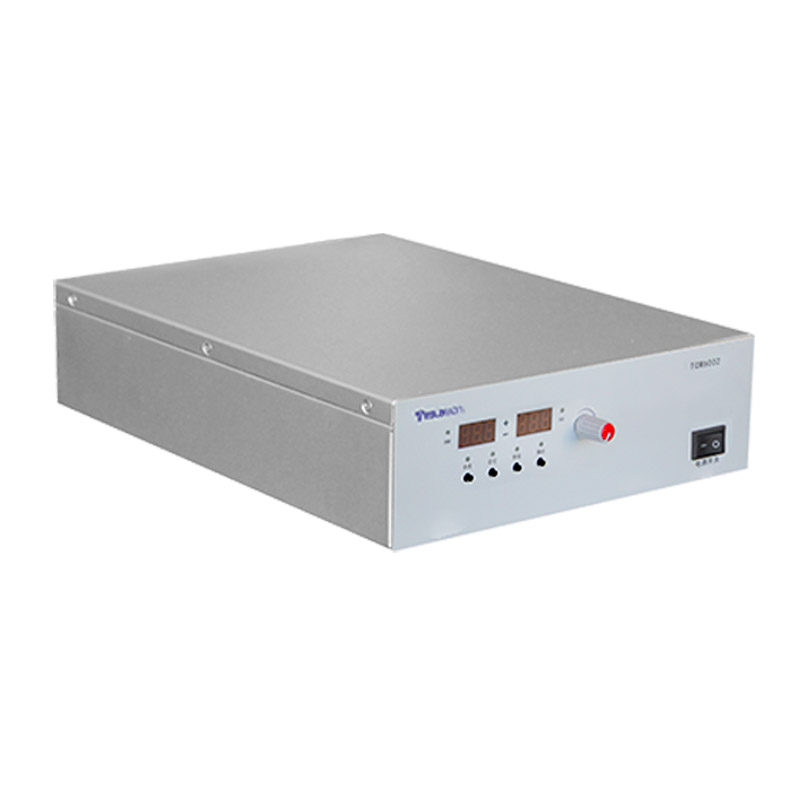Analysis of Integrated Radiation Source High-Voltage Power Supply
In fields such as industrial inspection, medical imaging, and material analysis, the stable operation of radiation sources is critical to the performance of equipment. As a core component of radiation sources, the technical level of high-voltage power supplies directly affects the energy accuracy, stability, and system safety of radiation. The integrated radiation source high-voltage power supply has become a key technological direction in modern radiation applications by breaking through the technical bottlenecks of traditional split-type power supplies through integrated design and innovative architecture.
1. Technical Architecture and Design Philosophy
The core of the integrated radiation source high-voltage power supply lies in the organic combination of functional integration and compact structure. Unlike the traditional model where the high-voltage power supply is separated from the radiation source, its design integrates core components such as high-voltage transformers, rectifying and filtering modules, feedback control units, and protection circuits into a single cavity through three-dimensional layout optimization, forming a highly collaborative whole. This design not only shortens the high-voltage transmission path and reduces the impact of parasitic parameters but also improves thermal management efficiency through shared heat dissipation structures. For example, using low-loss magnetic materials and planar transformer technology can reduce the power supply volume to less than 1/3 of traditional solutions while meeting the strict requirements of EMC (electromagnetic compatibility) standards for spatial radiation.
In terms of electrical topology, integrated power supplies typically adopt a multi-stage series resonant architecture, where the front-stage PWM (pulse width modulation) converter adjusts the input power, and the rear-stage resonant network completes high-voltage boosting and energy transmission. This topology offers the advantages of high efficiency (exceeding 95%) and low ripple (output ripple coefficient <1%), capable of providing stable DC high voltage for radiation tubes to ensure consistent radiation energy. Additionally, the introduction of digital control technologies (such as DSP or FPGA main control chips) enables real-time monitoring and dynamic adjustment of power supply parameters, supporting remote communication interfaces (such as RS485 and Ethernet) to meet the integration needs of intelligent systems.
2. Key Technical Breakthroughs
1. High-Voltage Insulation and Reliability Design
The integrated structure poses higher challenges for insulation technology. By using nano-composite insulation materials (such as epoxy resin doped with ceramic particles) and optimizing electric field distribution design (such as curved surface electrodes and gradient insulation structures), the withstand voltage can be increased to tens of kilovolts or even megavolts, while reducing the risk of partial discharge. For example, filling the cavity with sulfur hexafluoride (SF₆) gas or insulating oil, combined with vacuum potting technology, can effectively suppress surface discharge and extend the power supply's service life.
2. Dynamic Response and Energy Management
Radiation sources have significantly different requirements for the dynamic response of power supplies under different working conditions such as startup, scanning, and standby. The integrated power supply can complete voltage adjustment within microseconds during load changes by introducing adaptive feedforward control algorithms, avoiding fluctuations in radiation intensity caused by energy supply-demand imbalances. Meanwhile, the application of energy feedback technology (such as feeding back redundant energy during standby to the power grid) can increase system energy efficiency by 10%-15%, aligning with the trend of green energy conservation.
3. Multi-Physical Field Collaborative Optimization
High-voltage power supplies operate with strong coupling of electric, magnetic, and thermal fields. Through finite element analysis (FEA) tools, multi-physical field simulation of the cavity structure can accurately predict temperature distribution, electromagnetic interference paths, and mechanical stress concentration points. For example, using a composite heat dissipation scheme combining heat pipes and micro-channel liquid cooling can control the junction temperature of core components below 85°C, ensuring stability in continuous operation scenarios.
3. Application Scenarios and Development Trends
In the field of industrial non-destructive testing, integrated high-voltage power supplies support the miniaturization design of portable X-ray flaw detectors to meet on-site rapid detection needs; in medical CT equipment, their high stability ensures imaging resolution reaches sub-millimeter levels; in scientific research, large-scale devices such as synchrotron radiation sources rely on their high-precision energy output (voltage stability ≤±0.01%). In the future, with the popularization of wide-bandgap semiconductor devices such as silicon carbide (SiC) and gallium nitride (GaN), integrated power supplies will develop toward high-frequency operation (switching frequency exceeding the MHz level) and high power density (>500W/in³), while achieving fault prediction and self-maintenance through AI algorithms to further enhance system intelligence.
4. Conclusion
The integrated radiation source high-voltage power supply has addressed the issues of large volume and insufficient reliability of traditional power supplies through technological integration and innovation, becoming a core driver for advancing radiation application technologies. Its development relies not only on breakthroughs in power electronics but also on the support of interdisciplinary collaboration (such as materials science, thermal engineering, and control theory). As industries deepen their demand for radiation technologies, integrated high-voltage power supplies will demonstrate their technical advantages in broader scenarios, providing key support for the upgrading of high-end equipment manufacturing.




















